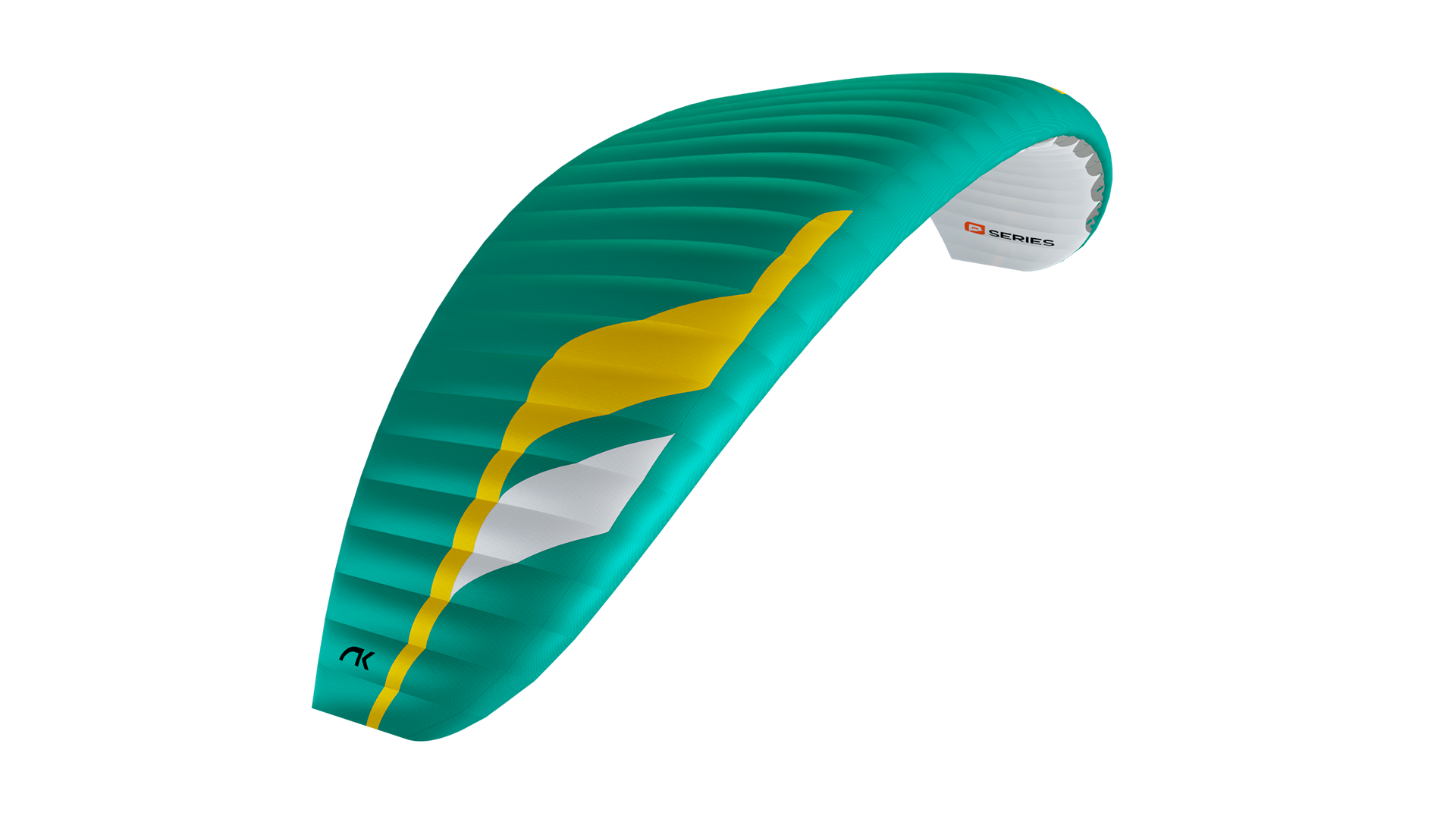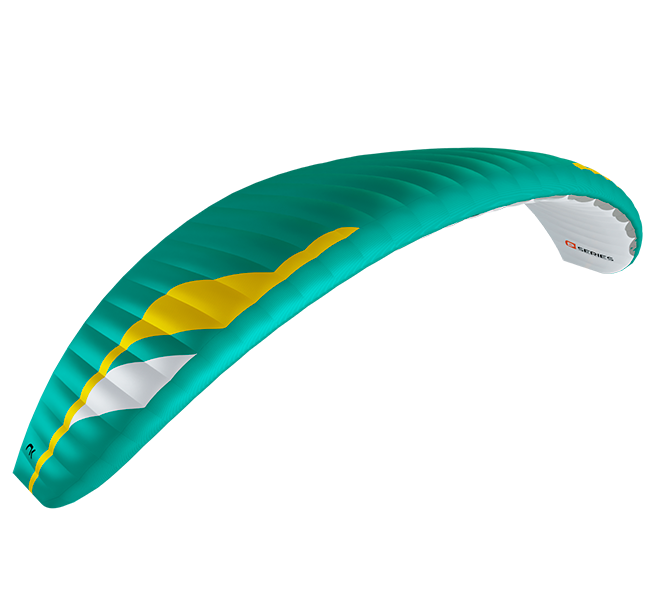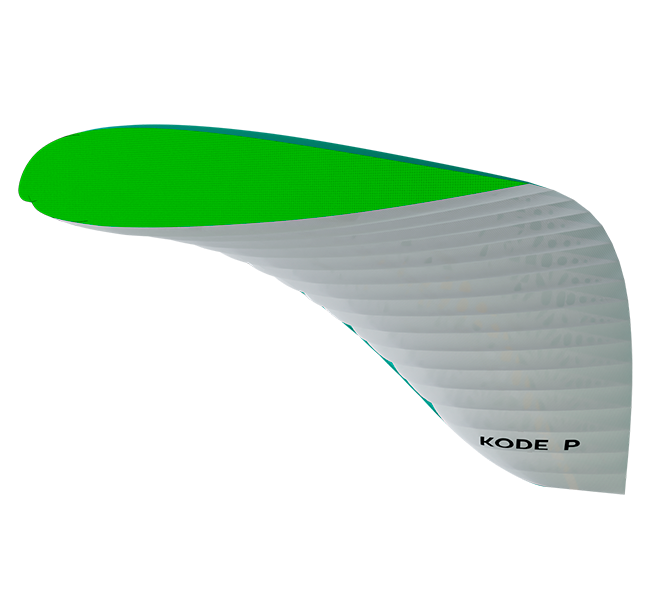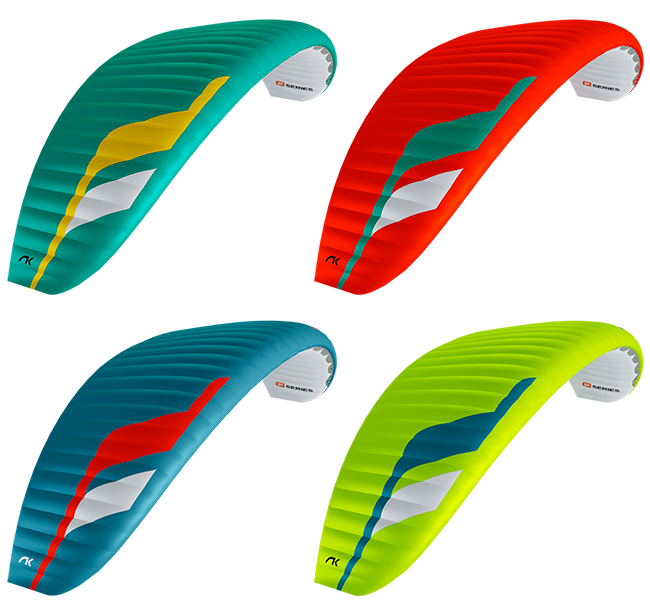Kode P

The perfect hike and fly glider, combining advanced materials and internal structure to achieve the optimal balance between lightness and durability.
Pleasant and more intuitive handling in the sizes 22, 24 & 26. Because of its size and loading, the intermediate ones (16, 18 & 20) are more dynamic with a plus in speed, but the changes developed on the front view make them very stable and maintain the easy flying characteristics of larger sizes. Enjoy a more daring touch with the smaller sizes (12 and 14), which are Mini Wings!
Its versatility will allow you to undertake a multitude of adventures. The wing permits you to fly in thermals and strong winds without having to compromise on safety and comfort. In addition, its lightness and ease of take off on all types of terrain will add to your hike & fly adventures.
From 1,55 kg.
Hike & fly
Its light weight will allow you to take your hike & fly challenges to another level, as well as being a very compact glider, which is easy to pack and transport. Easy to launch from any location.
Hike & fly fun
Sizes 12-14, and 16-18 (closer to top range load) are designed for experienced pilots with active piloting skills, considering that loading will influence wing reactions and flight characteristics.
Adventures
The Kode P is versatile in all sizes, letting you enjoy flying whilst feeling in control.



From 1.55 kg, the compact Kode P allows you to optimise space and weight.
Sizes 16 and 18 are lighter because they are made of lighter materials and have been certified with overload certification to achieve a greater weight range in flight.
The wing turns progressively and pleasantly.
Capacity to climb in thermals: very efficient, easy to turn and intuitive.
Its design guarantees precise piloting, with optimal geometry, thus achieving excellent handling and precise input responses.
Based on the aesthetics of the new generation of Niviuk paragliders.
Available in four colours: Spicy, Acid, Bitter and Citrik.

From 1.55 kg, the compact Kode P allows you to optimise space and weight.
Sizes 16 and 18 are lighter because they are made of lighter materials and have been certified with overload certification to achieve a greater weight range in flight.

The wing turns progressively and pleasantly.
Capacity to climb in thermals: very efficient, easy to turn and intuitive.
Its design guarantees precise piloting, with optimal geometry, thus achieving excellent handling and precise input responses.

Based on the aesthetics of the new generation of Niviuk paragliders.
Available in four colours: Spicy, Acid, Bitter and Citrik.
3DL technology is an adjustment of the fabric at the leading edge of the wing to control the ballooning and the creases that are generated by the curvature in this area. The leading edge is then divided into sub-panels which are sewn into each of the cells at the front of the paraglider. As a result, the leading edge of the wing is perfectly tensioned, which benefits the wing in performance and durability.
A good comparison is a rugby ball. In order to produce its characteristic oval shape without creases, its cover is made of several panels – not of just one piece.
The application of this innovation, in conjunction with the 3DP, is key to converting the perfect shape from 2D to 3D.
The RAM Air Intake system is based on the inward orientation of the air inlets in the profile so that they allow an optimum internal pressure at all angles of attack.
The result? Having greater internal pressure means better buffering of turbulence, greater consistency of the profile shape across the speed range. Excellent handling at low speed is achieved by allowing the pilot to extend the braking limit, so there is a lower risk of collapse and consequently, greater control and stability.
This technology seeks to implement the best orientation of the cloth on each panel according to its location on the leading edge. If the cloth pattern is correctly aligned with the load axes, the cloth suffers less deformation flight after flight, so the leading edge maintains its shape better and remains stronger over time.
The design of our paraglider and paramotor wings has evolved a lot over the years, with a positive and specific focus on the leading edge.
Thanks to this technology and 3DL, a perfect modelling of the panels and an exact representation from 2D to 3D is achieved.
The IKS (Interlock System) is a system to connect the risers with different parts of the wing, such as the lines, the harness or the parachute. This technology stands out for its innovation in lightness, optimising both the glider and the equipment in general, without compromising efficiency or the level of safety.
Niviuk has developed three variants: the IKS 1000, the Easy IKS 2500 and the IKS 3000, each intended to connect different parts of the paraglider.
✓ IKS 1000: risers to lines
The IKS 1000 is designed to connect risers to the lines. It can carry up to 1055 kg, which is far more than the 550 kg of the classic 3 mm maillons, but weighs much less. This makes it an essential part of our entire range of P Series (plume/light) wings, which already come with this technology as standard.
✓ Easy IKS 2500: risers to harness
The Easy IKS 2500 is a lightweight attachment system designed to connect the risers to the harness. It can carry up to 2673 kg and is made of Dyneema, making it very strong and durable. It is the perfect ultra-lightweight alternative to the twist-lock aluminium carabiner (with a maximum load of 2000 kg). The design and application of this connector makes it ideal for mountain harnesses and wings, and light flying gear.
Watch here the video tutorial with the user manual to learn how to use the Easy IKS 2500.
Download the Easy IKS 2500 certification report here.
✓ IKS 3000: parachute to harness
Finally, the IKS 3000 is used to connect the parachute to the harness. It can also be used to connect the risers to the harness, as an alternative to the Easy IKS 2500. It can carry up to 2960 kg, making it an ultra-light alternative to the 7 mm maillon (which can carry 3125 kg) or the twist-lock aluminium carabiner (with a maximum load of 2000 kg). The design and application of this connector is ideal for mountain wings and lightweight equipment.
Nitinol is a combination of 50% nickel and 50% titanium. The incorporation of Nitinol rods in the profile increases the performance of the wing, especially in three areas:
- Compared to nylon rods, the weight of the wing is reduced by 13%.
- Nitinol has two essential characteristics: shape memory and enormous elasticity. As a result, the rods retain their optimum shape even after an ultra-compact or incorrect folding, so that the wing is not deformed. This will always be the case unless the radius at the point of curvature is less than 1 cm.
- The leading edge shape is much more rigid and uniform which results in a much more consistent and progressive inflation and therefore an easier take off. The profile is taut at all times, without creases, and fully optimised for all flight phases.
In addition, the rods have a plastic protector at their ends to prevent any damage to the fabric of the wing.
Nitinol is now featured in all our wings.